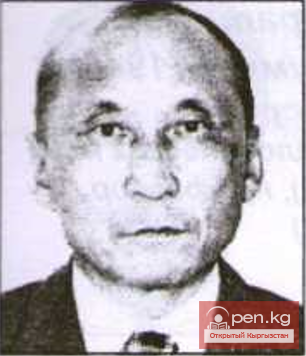
Woodworking Production
Wooden products held a significant place in the economic life of the Kyrgyz and their daily lives in the 19th century.
Kyrgyz woodworking masters (zhyjach usta) crafted agricultural tools, including those for soil cultivation ("omach"), shovels, forks (besh-ilik), as well as sledges ("chiyna"), sleds ("chigina"), and saddles (eer). They produced wooden items used in domestic production: parts of weaving looms, spindles, sharpening machines, etc.
Wood was also used to make some household items: stands for "juks" (sekichik), low cabinets with sliding doors (zhavan), chests (sandyq), and children's cradles (beshiq).
Masters engaged in the production of wooden dishes and utensils: cups, plates, large bowls, ladles, spoons, containers with lids, buckets, mortars, and lamp stands (chyraq paya), troughs (tepshi), sieves (elek).
The materials used included naturally growing trees in southern Kyrgyzstan such as juniper, willow (tal), birch (kayin), poplar (terek), apricot (oruk), and walnut (janak).
The tools for making wooden products were simple.
There was a certain specialization in woodworking. For example, there were masters who made only spoons, ladles, or musical instruments. Specialists focused solely on making saddles or dishes, as well as those who crafted the wooden frames of yurts. The latter had a higher qualification and produced a wider range of products.
According to many biographical accounts of Kyrgyz woodworkers, the craft was passed down through generations.
In the production of various wooden items, there are many similarities with the Tajiks. For instance, Kyrgyz masters in the Alai Valley and western regions of the area made wooden clogs and locks typical of the Tajiks. Similar techniques are noted in the crafting of wooden dishes. Some masters are known to have the name of the patron of woodworkers, Azrati Nu (among the Tajiks, Darwaza Khazrati Nu).
Most masters worked on order, while some took their products to the market. In the Batken region, a master named Mamyrzak, who lived in the Zardaly mountains, left a good reputation. He turned out finely crafted dishes on a lathe and during the summer took his products to markets in Isfara and Sokh.
In addition, he made many items to order.
In the technique of producing wooden items, southern Kyrgyz used turning, carving, burning, and bending. We will first focus on the items turned on the lathe. Masters who worked on the lathe were called kyrmachy. This lathe in the south has essentially the same design as that of the northern Kyrgyz and many other peoples. The length of the rotating shaft varies from 30 to 50 cm, and accordingly, the diameter ranges from 7–8 to 10–12 cm. The shaft rotates with the help of belts driven by hand (rotation occurs in both directions). A pre-roughly processed form is mounted on the shaft using a chisel ("kerki"). A "dog" (kuchuk), i.e., an extra part, is left for attachment, which is cut off after processing the item on the lathe. The processing of the rotating part is done by the master using a hook-shaped, sharply (on both sides) sharpened knife (kyrgych), which is attached to a wooden handle 30–35 cm long. While the form of the dish is rotating, the master holds the knife with both hands. The knife is used to apply grooves (kurbu) of varying widths and depths to the surface of the item.
On the lathe, they make cups — ayak (in the western part of the region, they are called kese) of various sizes and depths, with different profiles, bottoms, and bases.
Some of them are goblet-shaped, while others are wide (see Fig. 81, a, d, i). Cups were an essential part of household utensils.
For children, masters crafted small cups (cheychik), which usually had a more elegant appearance and thinner walls. The root of wild cherry (chiye) was sometimes used as material for these cups.
The dishes made on the lathe (tavak) came in various sizes: diameter from 20 to 40 cm and depth from 6 to 12 cm.
They also turned large deep bowls — chara (diameter from 40 to 50 cm, depth from 12 to 20 cm). Their walls are significantly thicker than those of the dishes. In the household of a nomad, a bowl had wide applications. It was used for kneading dough, storing pieces of meat in both raw and cooked forms, and serving various dishes. Bowls were used to store milk.

The Kyrgyz of the Noygut group made plates called ilegen (see Fig. 81, n). These are two almost flat plates, one positioned above the other. They were made from a single piece of wood. The diameter of the lower plate is approximately 40–45 cm, and the upper one is 30–35 cm.
On the lathe, small cylindrical vessels (height — 12–15 cm, diameter — 8–10 cm) were also processed (see Fig. 81, k). They were used to store salt.
Ethnography









































